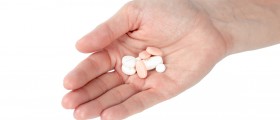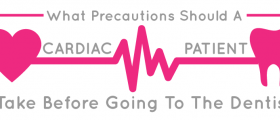
Amlodipine is a drug which is commonly used for the reduction of blood pressure levels and treatment for angina. Basically, this drug is capable of reducing one's high blood pressure by relaxing the muscles found in arterial walls, thereby reducing the resistance and the blood pressure at the same time. Also, the effect of this medication reflects through a greater amount of blood being delivered to the heart, treating angina this way.
Therefore, amlodipine is used both for the management of hypertension and as a part of treatment for the coronary disease. It has certain side-effects that people need to be aware of before taking the initial dose. Thus, read the lines below and get all the information you need about amlodipine.
Amlodipine for Angina Treatment
Basically, amlodipine is a calcium channel blocker. This means that it inhibits the transmembrane influx of calcium ions into vascular and cardiac muscles. This drug manages to do this by binding to both dihydropyridine and nondihydropyridine binding spots. Since all the operations our heart performs depend greatly on the passing of the calcium ions through the arteries and the heart, by modifying the influx of calcium through these areas, amlodipine can help people overcome certain heart and angina problems that they might be facing.
Yet, it is important to know that science is yet to determine the exact ways through which amlodipine treats angina. Nevertheless, some theories about this exist. The first one is related to the treatment of exertional angina, where amlodipine reduces the complete peripheral resistance that our heart is exposed to, lowering the overall oxygen demand, regardless of the level of physical activity one reaches. As for the vasospastic angina, here, amlodipine blocks any constrictions, restoring proper blood flow in the coronary arteries, thus treating the symptoms of this condition effectively.
However, apart from the standard types of usages described in various medical guides, many health practitioners and patients use amlodipine for some other purposes too.
Yet, due to the side-effects this drug can cause, you are advised to bear certain facts in mind before taking the initial dose of amlodipine. First of all, children younger than 6 should not take this drug and neither should individuals who have a history of heart failure or liver disease.
Make sure you inform your doctor if you match any of the profiles above. Also, let your doctor know if you drink alcohol on a regular basis or if you are being treated for hypertension. Additionally, if you are taking beta-blockers, do not cease the therapy suddenly, in order to switch to amlodipine. Abrupt cessation of this type can lead to numerous side-effects. Finally, if you are pregnant or are planning on getting pregnant during the amlodipine therapy, let your doctor know this since this drug is known to reach the child in the uterus and also affect him/her through breast milk once the baby gets born.
Bear in mind that amlodipine is only fully effective when combined with exercising, a healthy lifestyle and proper nutritional habits.
If you happen to miss a dose of amlodipine, wait until the time for the next one comes and take it normally, without making up to the previous one. Overdosing can lead to serious health problems and, in case you have taken a dose larger than the one prescribed, you are advised to seek immediate medical assistance.
Side-Effects from Amlodipine
In cases of overdose, this drug can lead to rapid heartbeats, serious bouts of dizziness and even fainting. Therefore, you are advised to react quickly once you realize that you have gone overboard with the dose of your medication.
Drinking alcohol while being exposed to the effect of amlodipine can be dangerous, since alcohol further reduces the blood pressure, triggering certain side-effects related to this occurrence. Also, when you take the drug, do not rise from a lying position abruptly since this can trigger dizziness or even fainting.
Some side-effects which appear quite often in people who use amlodipine are peripheral edemas, being present in about 8.3% of cases and fatigue, affecting 4.5% of users.
Less often, but frequently nevertheless, amlodipine leads to palpitations, stomach, muscle or head pain, dyspepsia and nausea, appearing in every 100th user, statistically.
Speaking of less common adverse effects related to the consumption of this drug, we need to mention blood disorders, male breast formation, impotence, depression, insomnia, tachycardia and gingival enlargement. These affect 1 in every 1000 individuals.
Ultimately, extremely rare side-effects related to this medication are erratic behavior, jaundice and hepatitis, along with tremors, hyperglycemia and Stevens-Johnson syndrome.
All in all, amlodipine is a very effective drug, used for treatment of angina and coronary disease, along with hypertension. However, before taking it, you are advised to inform your doctor about your entire medical history and certain information related to your general health and lifestyle. Being allergic to this medication or combining it with some other chemicals or drugs can lead to severe side-effects. Therefore, rule these factors out before taking the initial dose of amlodipine.

















Your thoughts on this
Loading...